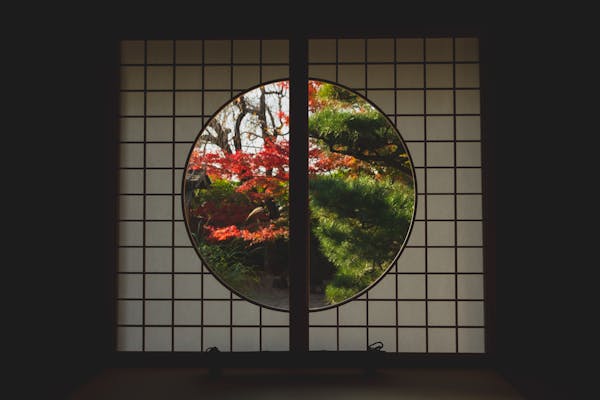Plants are the backbone of life on Earth, providing oxygen, food, and beauty to our world. Understanding the life cycle of a plant reveals the remarkable journey from a tiny seed to a mature plant that produces new seeds. This process, filled with distinct stages, showcases nature’s ability to sustain and renew itself. We explore each phase of a plant’s life cycle, from seed to dispersal, in a clear and engaging way. Whether you’re a gardener, a student, or simply curious about nature, this article offers a user-friendly explanation of how plants grow and thrive.
What Is a Plant’s Life Cycle?
A plant’s life cycle is the sequence of stages it undergoes from the moment it starts as a seed to the time it produces new seeds for the next generation. Each stage is essential, ensuring the plant’s survival and ability to reproduce. While the specifics vary across species, most plants follow a similar path. This cycle includes the seed stage, germination, seedling development, vegetative growth, flowering, pollination, fruit and seed production, and seed dispersal. Understanding these stages helps us appreciate the complexity of plant growth and its role in ecosystems.
The Stages of a Plant’s Life Cycle
Seed Stage
Every plant begins its journey as a seed, a small but powerful structure packed with potential. A seed contains an embryo, which is the baby plant, protected by a tough outer layer called the seed coat. Inside, a food supply called the endosperm provides nutrients for early growth. Seeds remain dormant, waiting for the right conditions—water, warmth, and sometimes light—to trigger the next stage. For example, a sunflower seed stays inactive during cold months but awakens in warm, moist soil, ready to start its life.
Germination Stage
Germination marks the moment when a seed comes to life. When water seeps through the seed coat, it swells and activates the embryo. Oxygen and the right temperature are also crucial for this process. The embryo begins to grow, using the stored food in the endosperm. A tiny root, called the radicle, pushes downward to anchor the plant and absorb water. At the same time, a shoot, known as the plumule, reaches upward toward sunlight. For instance, a bean seed typically germinates in 5 to 10 days under warm, moist conditions, sprouting a small plant ready to face the world.
Seedling Stage
Once the shoot breaks through the soil, the plant enters the seedling stage. This young plant is fragile but eager to grow. It develops small leaves called cotyledons, which help it produce energy through photosynthesis. The seedling also forms its first true leaves and strengthens its root system. Water, sunlight, and nutrients from the soil are vital at this stage to support growth. A tomato seedling, for example, takes about 2 to 3 weeks to develop a sturdy stem and true leaves, preparing it for the next phase of its life.
Vegetative Growth Stage
During the vegetative growth stage, the plant focuses on building its structure. It grows taller, produces more leaves, and expands its root system. Leaves capture sunlight to make food through photosynthesis, while stems provide support and transport nutrients. Roots dig deeper into the soil, absorbing water and minerals. This stage can last weeks, months, or even years, depending on the plant. A maple tree, for instance, spends years developing a strong trunk and branches before it’s ready to reproduce, ensuring it has the strength to support future growth.
Flowering Stage
When the plant reaches maturity, it enters the flowering stage, a critical step in reproduction. Flowers are the plant’s reproductive organs, designed to attract pollinators like bees or butterflies. Each flower has colorful petals to draw attention, male parts called stamens that produce pollen, and female parts called pistils that receive pollen. The appearance of flowers signals the plant’s readiness to create seeds. For example, apple trees produce delicate blossoms in spring, inviting pollinators to visit and begin the reproductive process.
Pollination Process
Pollination is the process where pollen from the stamens reaches the pistil, enabling fertilization. This can occur through self-pollination, where pollen moves within the same flower or plant, or cross-pollination, where pollen transfers between different plants. Pollinators like bees, birds, or even wind play a key role in cross-pollination. For instance, strawberries depend on bees to carry pollen between flowers, ensuring successful fertilization. Without pollination, the plant cannot produce seeds, making this stage vital for the continuation of the life cycle.
Fruit and Seed Production Stage
After successful pollination, the flower transforms into a fruit that houses new seeds. The fruit protects the seeds and aids in their dispersal. For example, an apple forms from a fertilized apple blossom, with seeds tucked inside its core. Similarly, peas develop pods that encase multiple seeds. This stage ensures the plant passes on its genetic material to the next generation, completing a key part of the life cycle.
Seed Dispersal Stage
The final stage is seed dispersal, where seeds are spread away from the parent plant to avoid competition for resources. Plants use various methods to achieve this. Some seeds, like those of dandelions, are carried by the wind. Others, like acorns, are transported by animals such as squirrels. Water can carry seeds like coconuts across great distances, while some plants, like touch-me-nots, explode to scatter seeds. Once dispersed, seeds wait for favorable conditions to restart the cycle, ensuring the plant species continues to thrive.
Factors Influencing the Plant Life Cycle
Several environmental factors shape how a plant progresses through its life cycle. Water is essential for germination and nutrient transport. Sunlight fuels photosynthesis, providing energy for growth. Soil supplies nutrients and a stable foundation for roots. Temperature influences germination and flowering times, while pollinators are crucial for plants that rely on cross-pollination. For example, a cactus adapts to dry conditions with minimal water, while a water lily thrives in wet environments, showing how plants adjust to their surroundings.
Importance of Understanding the Plant Life Cycle
Knowing the plant life cycle is valuable for many reasons. Gardeners use this knowledge to plan planting schedules and create optimal growing conditions. Farmers rely on it to time harvests and maximize crop yields. Students studying biology gain insights into ecosystems and the role plants play in sustaining life. For example, understanding the flowering stage helps gardeners support pollinators, while knowledge of seed dispersal aids in planting diverse gardens. This understanding fosters a deeper connection to nature and its processes.
Practical Applications in Gardening and Farming
In gardening, the plant life cycle guides decisions about when to plant, water, or fertilize. For instance, knowing that tomato seedlings need ample sunlight helps gardeners choose the best spot for planting. Farmers use the cycle to rotate crops or select plants suited to their climate. By understanding each stage, they can ensure healthy growth and bountiful harvests, contributing to food security and sustainable practices.
Supporting Ecosystems
Plants are vital to ecosystems, providing food and habitat for animals. The life cycle, particularly pollination and seed dispersal, supports biodiversity. For example, bees pollinating flowers ensure seed production, while birds dispersing seeds help forests grow. By learning about the life cycle, we can take steps to protect pollinators and promote healthy ecosystems, ensuring balance in nature.
Conclusion
The life cycle of a plant is a remarkable process that transforms a tiny seed into a thriving plant capable of producing new seeds. From germination to seed dispersal, each stage plays a critical role in the plant’s survival and reproduction. By understanding these stages, we gain insights into how plants grow, adapt, and contribute to the world around us. Whether you’re planting a garden, studying nature, or simply admiring a flower, the plant life cycle offers a window into the beauty and complexity of life. This knowledge empowers us to care for plants, support ecosystems, and appreciate the natural world.
FAQs
What triggers a seed to start germinating?
A seed begins germinating when it gets enough water, oxygen, and the right temperature, activating the embryo to grow into a plant.
How long does a plant’s life cycle last?
The length varies by species. Annual plants complete their cycle in one year, while perennials like trees may take decades.
Why do plants need pollinators?
Pollinators like bees transfer pollen to the pistil, enabling fertilization and seed production, which is essential for reproduction.
How do plants disperse their seeds?
Plants use methods like wind, animals, water, or explosive mechanisms to spread seeds, ensuring they grow away from the parent plant.







